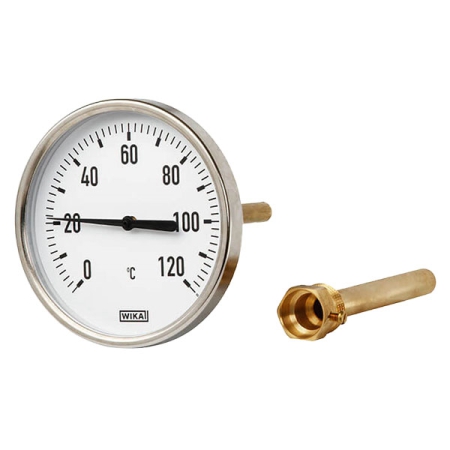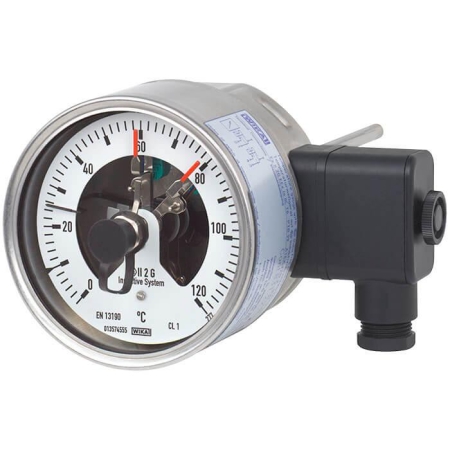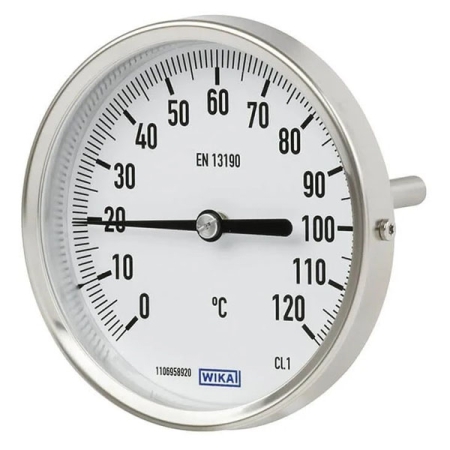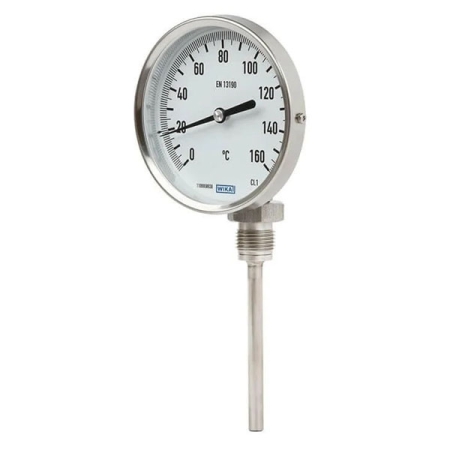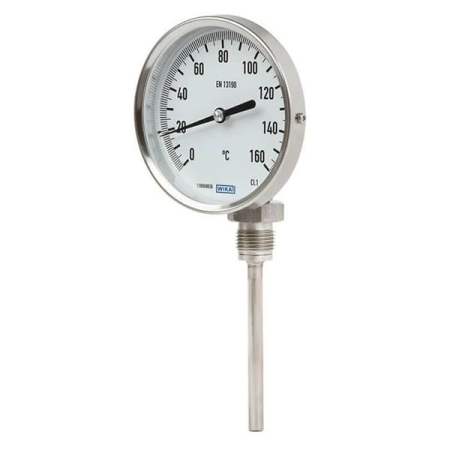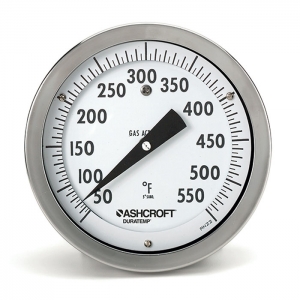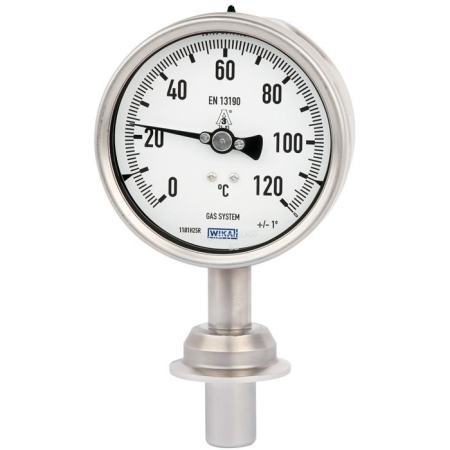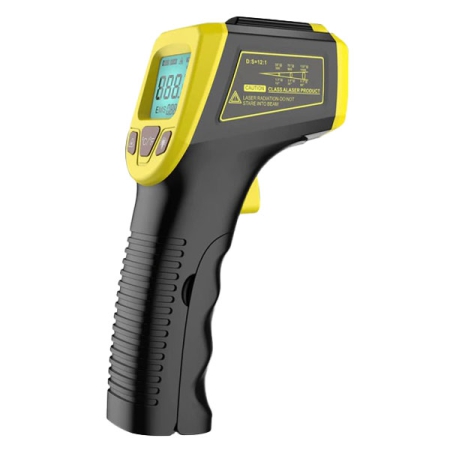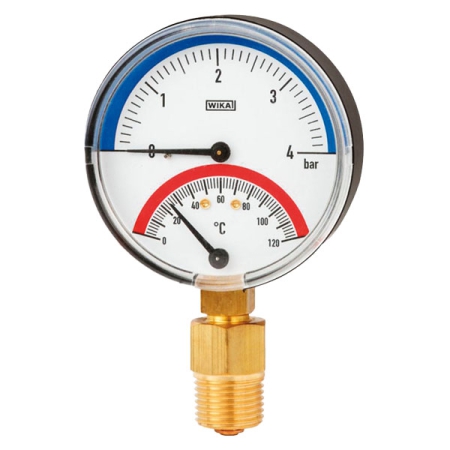Thermometer
Thermometer is one of the widely used instruments in the industry and the wide world of production and monitoring in factories and refineries, etc. The thermometer not only has industrial uses but also includes domestic uses, although their models are different, but they have the same functionality. Therefore, it is necessary to get familiar with the structure and types of thermometer models.
What is an industrial thermometer?
Thermometer is composed of two Greek words, thermo meaning heat and meter meaning measurement.
Thermometers are instruments that measure temperature or temperature gradient in different ways.
Thermometer can be used to measure the temperature of solids, liquids and gases. (Different forms of material can be measured with a thermometer.)
Thermometers consist of two key elements:
- Temperature sensor
- A medium or instrument that converts physical changes into numerical values that are understandable to the user.
- Display 15 Products per page
Types of thermometers
- Contact thermometer
- Non-contact thermometer
Over time, various methods have been designed to measure temperature and each of these methods has its own advantages and disadvantages:
Contact thermometers
Contact thermometers usually measure the temperature of the system by thermocouple, mercury or bimetal method. In fact, they are in contact with the process and are able to measure the temperature of the fluid through sensors. such as:
- Alcohol thermometer
- Mercury Therommeter
- Metal-free mechanical thermometer
- Kelumi thermometer
- Galileo thermometer
- Liquid crystal thermometer
- Quartz thermometer
- Rectal thermometer
- Resistance thermometer
- Inverse thermometer
- Silicon temperature sensor
- thermistor
- Thermocouple
- Digital thermometer
Contact industrial thermometer sensors are:
- Bimetal
- Gas actuated
- Mercury chamber
- Alcohol container
- Thermocouple
- RTD
Types of non-contact thermometers:
- Infrared thermometer
How does a mercury thermometer work?
In mercury thermometers, as the temperature increases, the mercury expands and the length of the mercury column increases, and when the temperature decreases, the length of the liquid column decreases and by placing the mercury in the tube next to the number, its temperature is determined and the temperature measurement is done easily.
Today, thermometers are calibrated and graded with standard units such as Celsius (in Canada and England), Fahrenheit (in the United States), and Kelvin (mainly by scientists).
What is a bimetal thermometer and how does it work?
Bimetal industrial thermometer uses two different metal strips with different temperature points to convert temperature changes into mechanical changes. Metal strips are usually:
- Steel and brass
- Steel and copper
which are connected to each other longitudinally and heat is transferred to them. Due to the fact that the thermal coefficients of the two metals are not the same, the strip bends when heated and cooled.
The amount of bending of the tape is proportional to the temperature changes and moves a hand along the scale plate. To increase the sensitivity, the length of the metal can be increased or it can be assembled as a spring.
Dial thermometer is usually cheap, simple and durable. Due to its fully mechanical structure, it only displays the current temperature of the environment.
Types of bimetal thermometers
- Horizontal
- vertical
- Telescopic (folding)
Horizontal or bimetal thermometers are actually industrial thermometers whose streak is connected to the screen horizontally, that is, vertically, and when choosing it, we must look at the process conditions, whether it should be horizontal or vertical.
Bimetal vertical thermometers, in fact, their sequence, which contains the sensor, is connected vertically to the process and they are usually sold more than horizontally but still, to choose it, you should pay attention to the type of placement of the instrument in the process.
What is an actuated gas thermometer and how does it work?
Actuated gas thermometer is actually filled with a chamber that contains helium gas and with the increase in temperature this gas expands and as a result the pressure increases and is transferred to the sensor and thus moves the hand and causes the fluid temperature to be displayed.
Comparison of bimetal thermometer and actuated gas thermometer
If we want to compare these two models of thermometers, in fact, we have to say that bimetal thermometers show lower cost and better stability in weather changes than gas thermometers, but in the speed of temperature transfer and response to temperature changes, the thermometer Gas works faster and also has the ability to connect to capillary.
Thermometer applications
Thermometers can be used for different applications.
- industrial
- Domestic
- medical
We can adjust and control the temperature of the refrigerator and freezer with a thermometer. For example, in factories, by installing an industrial thermometer in the furnace, it can be turned off or on.
Therefore, when choosing a thermometer, you must first determine the application and installation location so that you can make the most suitable choice. Among the common uses of thermometers, the following can be mentioned:
- Monitoring of engines
- Air conditioning systems
- Review of automatic systems
- Food preparation processes
- Detect hidden problems
- Monitoring the humidity and leakage of a building
- Identification of energy loss and poor insulation
- Diagnosis of electrical and plumbing faults
- Installation in laboratories and warehouses

